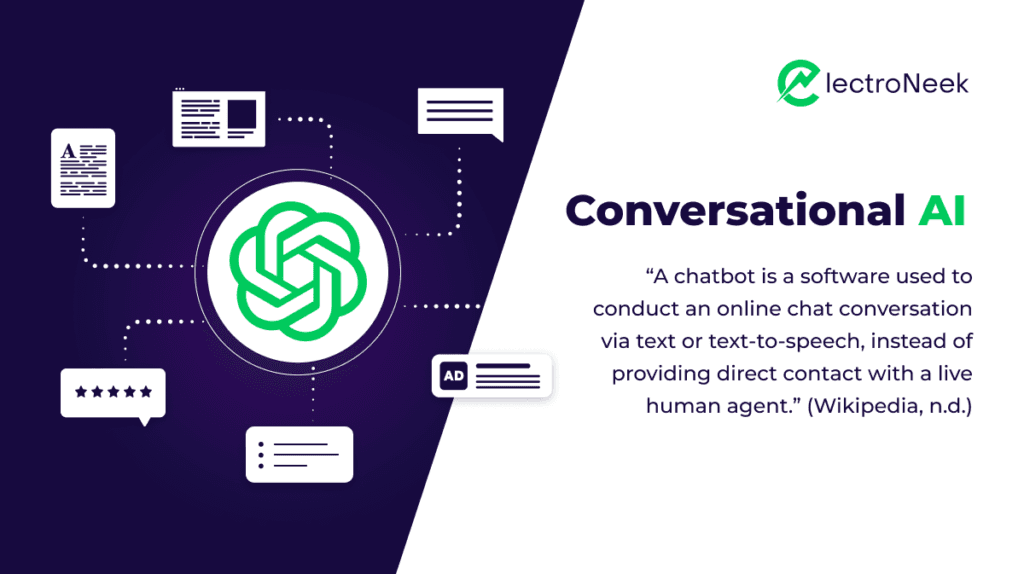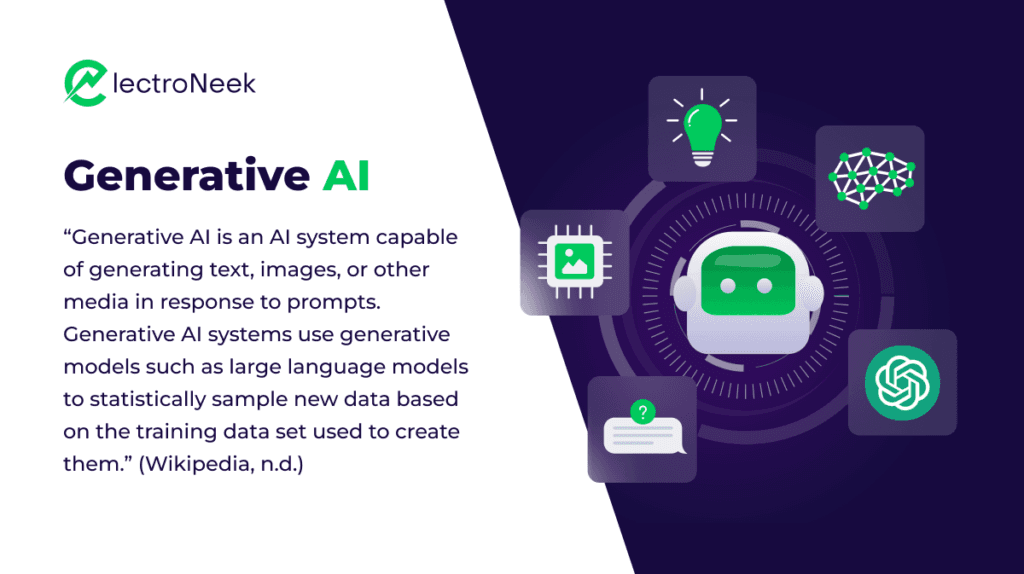Are tech companies advancing too quickly in developing powerful artificial intelligence (AI) technology that could surpass human intelligence?
That’s precisely what tech leaders Elon Musk and Steve Wozniak, amongst a prominent group of computer scientists, believe. The belief is so strong that they petitioned for a 6-month pause on developing AI technologies to analyze the potential risks. This petition was initiated after the recent release of OpenAI’s ChatGPT-4.
The petition aims to comprehensively assess AI's ethical, legal, and social implications. It further calls for creating an international body to oversee the development and deployment of AI technology to ensure that it is used responsibly and ethically. The petition also calls for establishing a common set of principles and standards for AI development and deployment, as well as adopting measures to ensure that AI technology is used for the benefit of humanity. Finally, the petition calls for a commitment to ensure the safety and security of AI technology and that its use does not lead to the exploitation of vulnerable populations.
As a result, there are critics on both sides of the coin, some people agreeing with the call to action, while others labeling the move as AI hysteria. Bill Gates stands on the opposite side of the coin, that calls to pause the development of artificial intelligence will not “solve the challenges” ahead. ElectroNeek has also responded to the potential challenges and opportunities presented by the evolution of AI technology.
Regardless, this indicates the true power of conversational and generative AI technology, two distinct branches of artificial intelligence technology.
In this post, we will explain the difference between conversational and generative AI, its applications in IT, and how these technologies integrate with RPA.
What is Artificial Intelligence (AI), and how is it used?
Artificial intelligence (AI) is the simulation of human intelligence processes by machines, especially computer systems. These processes include learning (acquiring information and rules for using the information), reasoning (using the rules to reach approximate or definite conclusions), and self-correction. AI applications include expert systems, natural language processing (NLP), speech recognition, and machine vision.

AI technology has revolutionized how people and businesses operate, and MSPs are no exception. AI helps eliminate tedious tasks so employees and businesses can spend their time tackling more substantial business problems - a boon for any business looking to scale up in a competitive market.
By adopting AI-based robotic process automation solutions, MSPs can cut down on costs and increase marketability by creating an attentive service model that meets customer needs quickly and easily.
What is the difference between Conversational and Generative AI?
Both conversational and generative AI involves artificial intelligence that can help automate numerous tasks, but they go about it differently.

Conversational AI is focused on natural language processing and understanding, allowing machines to interact with humans naturally. It automates customer service interactions, provides virtual assistants, and enables natural language search.
A real example of conversational AI is Amazon Alexa. Alexa can play music, answer questions, and control smart home devices. It is powered by natural language processing and machine learning technologies, allowing it to understand and respond to voice commands.

On the other hand, Generative AI generates text, images, or other media in response to directions or prompts . Generative AI systems use generative models such as large language models to statistically sample new data based on the training data set used to create them.
A real example of generative AI is GANs (Generative Adversarial Networks). GANs are a type of neural network architecture used to generate new data based on existing data. GANs are used in various applications, such as image synthesis, text generation, and audio synthesis.
One of the most famous examples of generative AI is Adobe Photoshop's Content-Aware Fill feature. This feature uses generative AI to analyze the content of an image and generate new pixels to fill in gaps or remove unwanted elements.
What are AI Applications in IT?
Artificial Intelligence (AI) has become increasingly important in modern technology, providing various solutions to complex problems. AI is used for cybersecurity, predictive maintenance, and automated testing, providing various benefits to businesses and organizations.
ChatGPT Integration: There are hundreds of possibilities for integrating ChatGPT to software and applications. For example, one of the first software applications with a ChatGPT integration is the business messaging platform Slack. ChatGPT suggests text that can be customized and summarizes entire channels or individual discussion threads in seconds.
Automated Network Management: Network management uses software applications and tools to monitor computer network performance. It reduces the amount of manual effort required to maintain a network and improves the network's accuracy and reliability. Automated network management tools monitor network performance, detect and diagnose network problems, and configure network devices.
Cybersecurity: AI detects and responds to threats more quickly and accurately. AI can identify malicious activity, detect intrusions, and identify potential threats. AI automates security processes and analyzes large amounts of data to detect patterns and anomalies while detecting malicious activity on networks, detecting malware, and responding to security threats.
Predictive Maintenance: Predictive maintenance is a strategy for maintaining the performance and reliability of equipment and machinery by using data-driven predictive models powered by AI to anticipate and prevent potential problems before they occur. Predictive maintenance uses collected data from sensors, machines, and other sources to identify patterns in the equipment's performance and predict when maintenance needs to be done. This helps to improve the efficiency of maintenance operations and reduce the risk of unexpected breakdowns.
Automated Testing: AI automates software application testing, helping speed up development. AI tools execute tests and provide detailed reports on the results. Automated software testing tests applications for functionality, performance, security, and other areas. It is often used with manual testing to ensure the highest level of quality.
How is AI used in Automation?
You’ve heard of artificial intelligence and automation.
The synergy between AI and automation results in Intelligent Automation.
Automation streamlines manual tasks with software or automation bot without human intervention, while AI uses computer systems to simulate human intelligence. Together, they can be used to create intelligent automation systems that can automate complex tasks, such as data analysis and decision-making.
AI is used to automate processes that would otherwise require manual intervention. AI-enabled automation can help automate mundane tasks such as data entry, customer service, scheduling, and more complex tasks such as natural language processing, machine vision, and predictive analytics.
AI-enabled automation can help organizations increase efficiency, reduce costs, and improve customer satisfaction.
Automated Customer Service: Automated customer service (ACS) is an interactive system that provides customers with access to information and support without human intervention. Typically in the form of AI Chatbots, this technology uses artificial intelligence (AI) and natural language processing (NLP) to understand customer inquiries, generate answers, and provide solutions.
Automated scheduling and appointment booking: AI, in combination with RPA, automates the scheduling and appointment booking process for businesses, freeing up time for staff to focus on other tasks.
Automated data entry: The powerful combination of RPA and AI automates data entry, and AI's decision-making and learning capability reduces errors and saves businesses time.
Automated document analysis: Documents can be processed and analyzed using RPA and a combination of AI. Hundreds of documents, such as contracts and legal documents, can quickly be analyzed to identify specific information.
Automated data analysis: RPA is used to extract data, and AI is used to draw insights from the information to process large amounts of data and extract meaningful insights quickly.
Automated process optimization: RPA and AI automate the optimization of business processes, such as supply chain management and inventory control.
Generative and Conversational AI will be invaluable tools for developers, providing them with extensive knowledge and saving valuable time. With the whole web open to AI endeavors, entry-level basic knowledge can be presented more efficiently, limiting the hours of searching required for answers to traditional questions. Despite needing expertise for a more substantial dive into understanding complex issues, AI is revolutionizing the process by which entry-level material is usable, widespread, and relatively easy to comprehend.
Due to this technology, developers worldwide can now access easy learning pathways – increasing their skills and confidence in various disciplines.
How can MSPs leverage Conversational and Generative AI?
At ElectroNeek, the mantra for success for MSPs is to drive customer satisfaction through improved service, which is why Conversational AI can be an integral part of the picture.
By integrating it into their operations, MSPs can empower their team members more efficiently and faster to respond to their customer's needs, issues, and concerns.
As a result, customers get immediate answers, improving response times and allowing MSPs to focus on higher-priority tasks like product development. Artificial intelligence enhances the customer service experience, helping businesses remain competitive and simultaneously providing excellent customer value.
Generative AI can help make it a reality by streamlining tedious and repetitive tasks, freeing up valuable resources where you need them most.
By automating mundane processes more precisely than ever, RPA platforms like ElectroNeek can help MSPs reach those customer service and efficiency goals quickly and efficiently - allowing for more time to focus on strategic income-generating opportunities for making a more significant return on your bottom line.
Real-life examples of how leading MSPs have implemented AI solutions successfully
AI solutions are quickly becoming the go-to for MSPs seeking new ways to increase recurring revenue. MSPs have already led the adoption charge by successfully implementing AI-based solutions.
For example, one software company decreased its downtime resolution time by 75%, increasing customer satisfaction. That same software company was also able to scale up its services with a 30% reduction in resources and personnel.
With the help of an AI-based solution, another MSP uses intelligent automation to streamline operations related to document processing for its clients.

As these real-world examples prove, incorporating AI into your MSP's operations can provide massive long-term benefits – especially when generating recurring revenue streams!
Leverage AI and RPA technologies in your business
AI has come a long way from its initial development and offers incredible business potential. The synergy of AI and RPA, creating Intelligent Automation, eliminate tedious tasks so employees and businesses can spend their time tackling more substantial business problems - a boon for any business looking to scale up in a competitive market.
By understanding the different types of AI and how they can be applied to various situations and other technologies such as RPA, businesses can improve customer service and find new ways to increase their profits.
Conversational AI enables machines to interact with humans naturally, automating customer service interactions, providing virtual assistants, and natural language search. Generative AI is prompted to generate text, images, or other media.
Think of these two technologies as the human brain and refer to the left-brain and right-brain dominance; the left brain (represented by generative AI) is more analytical and solution-oriented, while the right brain (conversational AI) is more creative and good with human interaction.
If you want to start leveraging the power of Intelligent Automation, check out our eBook– learn more about our GPT-4 Recipes for Downloadable Bots and begin transforming your MSP business through artificial intelligence!

